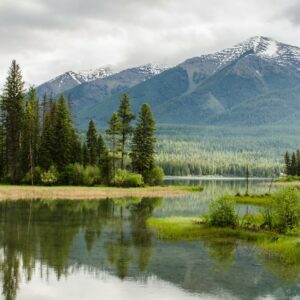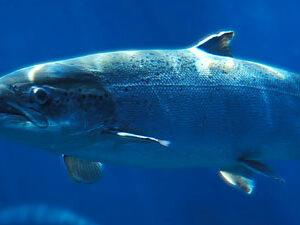How Environment Canada Got It So Wrong on Genetically Engineered Salmon
Updated May 18, 2022.
Canada became the first country in the world to approve a genetically engineered salmon for human consumption. This should have environmentalists and seafood lovers from coast to coast concerned.
Opposition to genetic engineering is often labelled as anti-scientific and ill-informed. There’s a strong debate about the benefits and risks of genetically engineered plants and animals in our food systems. But there is plenty of science to suggest that we should be concerned about the risk to wild species and nature from genetically engineered species, like the salmon being raised in P.E.I.
The concern is that captive genetically engineered salmon could escape and breed with wild salmon resulting in irreversible impacts.
As these operations scale up, it becomes not a question of “if”, but “when”. As you read this, we have an urgent and unique opportunity to halt genetic pollution by updating the Canadian Environmental Protection Act (CEPA), last updated in 1999. On February 9th, the Federal Government introduced a Bill in the Senate that is intended to modernize the Act. Shockingly, it does nothing to increase the protection of Nature from this emerging threat.
Send the letter now to keep Canada’s wild species wild.
Did you know?
Mixing of genetically engineered plants and wild plants has a long and troubled history. When Agribusiness companies developed a grass resistant to pesticides, scientists discovered wild hybrid species containing the engineered DNA nine miles away after only one year! Learn More >
Fisheries and Oceans Canada is not blind to the risk. Government scientists conducted a risk assessment of the PEI project using the typical risk assessment equation: Risk = Hazard x Exposure.
“The environmental hazard assessment for EO-1α Salmon ranged from negligible to high…with highest ratings through trophic interactions with other organisms and intraspecific hybridization.”
The scientists recognized the high hazard of hybridization. However, they ranked exposure as low because the fish are supposed to be infertile and the fish farms are land-based. But what should give us all pause is that the method used to ensure the fish are infertile (called triploidy), is not 100% effective and there have been documented escapes from land-based facilities.
To make matters worse, the PEI company growing these genetically engineered salmon is also farming non-genetically engineered salmon in the same facility, even further increasing the chance of Exposure.
So the scientists plugged the results into the equation and came up with this answer:
High Hazard x Low Exposure= Low Risk.
And the method received regulatory approval for ONE project.
And therein lies the danger to our fish and all the critical ecosystems they inhabit. Each project will get the same Low Risk ranking, but with each project, Exposure increases and multiplies the Risk.
In a US court case challenging the FDAs approval of genetically engineered salmon the judge spotted the problem.
‘Obviously, as the company’s operations grow, so too does the risk of engineered salmon escaping.’
In an October 2020 decision, the judge told the FDA to go back and reassess the risk to wild salmon.
Human error, natural disasters, regulatory slippage, corruption—all these factors can and do cause mistakes leading to captive farmed salmon escaping to the wild where they can wreak havoc on wild populations. Over time the probability of hybridization with wild salmon and all the hazards that it represents becomes almost a certainty.
We can’t let that happen.
Our concern with the approval and commercial production of genetically engineered salmon is not only about the risk to wild salmon but the precedent it sets. The aquaculture industry is now experimenting with other genetically engineered seafood including trout, tilapia, bream, shrimp and so on.
Jennifer Doudna, co-inventor of the gene-editing tool CRISPR, has said the following:
‘What made CRISPR so unique is that it’s easy to use, relative to other things, and made it a tool that could be adopted widely by essentially anybody with a little bit of molecular biology training.’
If you are a scientist, conservationist, nature lover, angler, hunter, animal lover or enjoy a walk in the woods, this statement should give you pause. Genetic contamination introduced from food systems into wild populations is not only a pollutant that lasts forever but it increases over time and the impacts are impossible to predict.



